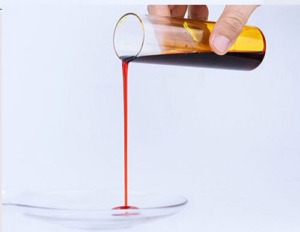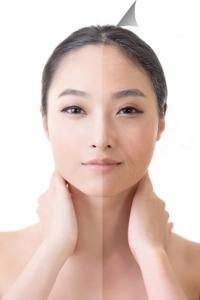Sea buckthorn oil can directly protect the metabolism of skin cells on redox balance. It is important for the physiological metabolism of lipids to maintain redox homeostasis, which is important for the proper functioning of cells. Phospholipid protection may be associated with beneficial fatty acids present in sea buckthorn oil, which influences the skin cells fatty acid profile.
The strongest correlation between oil fatty acids and increase in the cells fatty acid level is visible in the case of free fatty acids (FFA) regardless of whether that were control cells or treated with UV radiation. This relationship between FFA composition of the applied oil and cells might be associated with 24 h incubation with oil when cells were able only to take up and assimilate FFA from fatty rich oil composition.
composition.
Sea buckthorn oil is rich in palmitoleic acid (16:1), also called Omega-7, which plays a role in many metabolic processes including intracellular lipid mediated signal transduction, which includes lipid metabolism.
Sea buckthorn oil is also responsible for maintaining the fluidity of biological membranes. Palmitoleic acid levels are enhanced in the phospholipid profile of keratinocytes and fibroblasts after sea buckthorn oil treatment, which also causes the reduction of mRNA expression of proinflammatory genes, i.e., TNF-α, consequently sea buckthorn oil may affect intracellular signaling based on PI3K/Akt kinase cascades, and have anti-inflammatory activity, which was also confirmed by experiments on rats with diabetes.
In addition, sea buckthorn oil contains a large amount of linoleic and α-linolenic acids, which is capable of enhancing the level of phospholipid α-linolenic acid in cells. Alpha-linolenic acid contained in sea buckthorn oil has been found also as a source of eicosanoid prostaglandin E1, a signal precursor that produces antibacterial and cytoprotective extracellular fluids.
When sea buckthorn oil is added to skin cells, it enhances the level of these acids in phospholipid and free PUFAs fractions. Skin cells phospholipid PUFAs fraction is also enriched in γ-linolenic acid that is a precursor of anti-inflammatory eicosanoids, such as the 1-series prostaglandins and 15-hydroxyeicosatrienoic acid.
UV radiation significantly disturbs the metabolism of skin cell membrane phospholipids. Active compounds contained in sea buckthorn oil enhances the cell’s antioxidant abilities and prevents lipid peroxidation as well as enzymatic phospholipid metabolism. Sea buckthorn oil enhances, both phospholipid and free PUFA levels in keratinocytes and fibroblasts, as well as increases the ROS level favored by ROS-dependent lipid peroxidation manifested as oxidative fragmentation with enhanced 4-HNE levels and as oxidative cyclisation with enhanced 8-isoprostane levels.
Besides that, one of the main sources of peroxidation products-arachidonic acid (AA) is most enhanced in PUFAs of both skin cell lines, what indicates for huge tributary of this acid from used oil. As a result of AA peroxidation, increases in the 4-HNE levels can directly act as a signaling molecule or through protein adduct formation which significantly influences their structure and activity. Phospholipid AA is also metabolized by enzymes among which the most important are phospholipases including PLA2. It has been previously shown that UV radiation significantly increases PLA2 activity, while PLA2 inhibition improves skin conditions.
Sea buckthorn oil reveals similar as other plant oils PLA2 inhibition properties, preventing UV-induced lipid metabolism. Despite the observed decrease in PLA2 activity, the levels of endocannabinoids are increased after using sea buckthorn oil. It is believed that anandamide is a partial or full agonist of the CB1 receptor, depending on tissue and conditions, and is suggested to have low efficacy for CB2 receptors, whereas 2-AG is a full agonist of both CB1 and CB2 receptors.
 However, an elevated level of endocannabinoids is accompanied by a down-regulation of cannabinoid receptors. Such response may indicate that redox and inflammatory regulation is independent from the cannabinoid receptors. Moreover, oil-induced changes in endocannabinoids level may influence the skin neuroendocrine capabilities regulated by UV radiation, what leads to disorders in steroid hormones, neuropeptides, and neurotransmitters biosynthesis.
However, an elevated level of endocannabinoids is accompanied by a down-regulation of cannabinoid receptors. Such response may indicate that redox and inflammatory regulation is independent from the cannabinoid receptors. Moreover, oil-induced changes in endocannabinoids level may influence the skin neuroendocrine capabilities regulated by UV radiation, what leads to disorders in steroid hormones, neuropeptides, and neurotransmitters biosynthesis.
Regardless of the above, it has been shown that a high level of AA delivered to skin cells from sea buckthorn oil may result in increased generation of the 4-series leukotrienes, which have a strong pro-inflammatory and hyperproliferative effect.
Endocannabinoid levels are enhanced by treating skin cells with sea buckthorn oil, which are agonists of peroxisome proliferator-activated receptors (PPAR). It is known that PPARs are activated by fatty acids and their derivatives, including lipid peroxidation products like 4-HNE, which act as PPAR-α agonists.
PPARs act as modulators of cellular processes including lipid metabolism, and thus create a lipid signaling network between the cell surface and the nucleus. Enhanced expression of fibroblast PPARs indicates that sea buckthorn seed oil has anti-inflammatory activity. PPAR-α controls the expression of proteins that participate in inflammatory response, therefore enhanced activation of PPAR-α observed in fibroblasts indicates preventing NF-κB-dependent inflammation.
It has also been exhibited that anandamide as a ligand of PPAR-α can participate in its anti-inflammatory effect through impaired production of TNF-α. Similarly, enhanced expression of PPAR-γ decreases the expression of TNF-α.
In addition, sea buckthorn extract has been beneficial in reducing fat pad mass and preventing weight gain in mice. The extract was effective in producing hypoglycemic effects in animals through up-regulating PPAR-γ and PPAR-α gene expression.

Leave A Comment